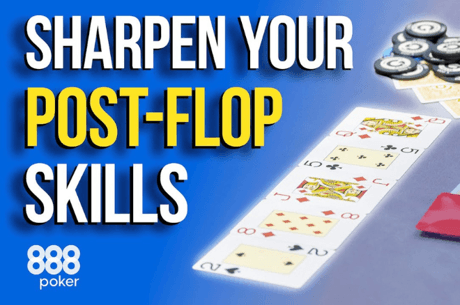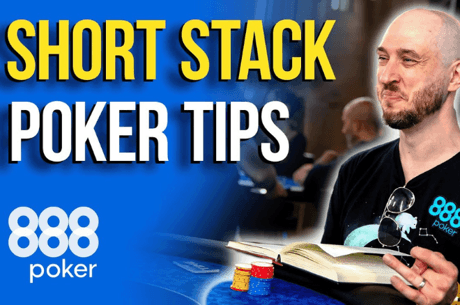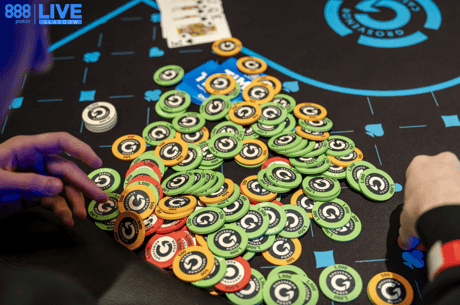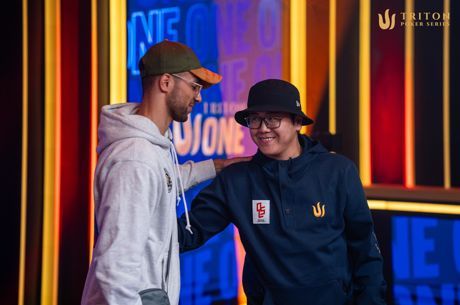Leverage Your Image at the Poker Table

Understanding your image in the minds of your opponents is extremely valuable in poker.
In a recent blog post, I described another player as having a "loose, aggressive image." After reading the post, he texted me "FYI I am not 'loose.' Without a doubt the tightest player you know preflop." Later he acknowledged that his image didn't match his actual play, which he viewed as "the biggest mistake people make against me."
Let's consider how table images are formed and how to turn that information into a higher win rate.
Thin Slicing
In his 2005 book Blink, writer Malcolm Gladwell popularized the term "thin slicing," which describes the ability to find patterns based on minimal experience. Thin slicing often begins with stereotypes, widely held but oversimplified beliefs about groups of people. The resulting judgments are surprisingly accurate and often reliable for decision-making.
Poker players are constantly thin slicing out of necessity. As soon as we see an unfamiliar player, we start looking for clues to match against a profile lodged somewhere in our memories. Is he or she a LAG or TAG? Old man coffee or middle-aged woman? Shark, fish or donkey? Nit, tourist or soccer dad?
This kind of work is vitally important. A big decision for which thin slicing is our only guide may come at any moment. The quicker we can match a player's appearance, mannerisms, comments and betting actions to a baseline profile, the more likely we are to make the right decision.
Perception Is the Mother of Reality
You aren't the only person doing this. Your opponents make assumptions about how you play poker based on your age, gender, race, clothing, jewelry, electronics, personal hygiene and anything else that might provide a thin slice of information.
Once at a casino poker room, another player called me "Fort Knox" after a long stretch of folding weak hands.... This meant I was super tight and never bluffed, signaling a good spot to shift gears.
They will listen to your words and look for patterns in your betting actions. When opponents form their initial images or profiles, they tend to be sticky and unlikely to change easily. Their initial perceptions become their reality, even when they are completely wrong.
Recency bias is an important consideration. A new player might arrive right before you go card dead for an hour or more, and conclude you are a complete nit. The next new player might arrive after the pendulum swings and see you betting and raising with several big hands in a row, none of which go to a showdown. Thin slicing tells her you are a hyper-LAG or maniac.
Amazingly, many players will tell you exactly what your image is. Once at a casino poker room, another player called me "Fort Knox" after a long stretch of folding weak hands. I pretended not to hear him at first, and got him to explain (a little louder so others at the table could hear) this meant I was super tight and never bluffed, signaling a good spot to shift gears.
Exploiting the Perception
When you get involved in a hand, of course you consider your opponent's image and how that shapes that player's ranges and betting actions. Also pause briefly to consider your own image. Whether that image is accurate or not doesn't matter. What matters is how this specific opponent will respond to your betting actions based on the image he or she holds.
Then leverage your image. A "Fort Knox" can run over the table for a short stretch. If you have a LAG-gy, bullying image, grab a handful of chips without counting them and drop the stack aggressively on the table when you have a strong value hand. With a maniac image, overbet with the nuts. Middle-aged ex-soccer moms can check-raise bluff on the river. Semi-bluffs on the turn by nitty senior citizens demand more respect than the same bets by millennials with hoodies, shades and noise-canceling headphones.
Be careful not to overdo it. Just one or two of these contrarian plays per session can raise your win rate dramatically without shattering the image that makes it possible. Pick your spots and villains carefully, so you aren't bluffing into obvious strength, or trying to exploit an opponent who isn't paying attention or has a different profile on you than everyone else at the table.
Conclusion
While you are thin slicing, remember that most other players are doing the same thing, developing a profile they hope to use in exploiting you.
Whether you make an effort to establish a specific image or just play the hands as they come, awareness of the image you are creating allows you to stay one step ahead.
David Bass mostly plays in live no-limit hold’em cash games and has been writing about poker since 2012. You can follow him on Twitter @KKingDavidPoker or enjoy his blog, They Always Have It, at https://kkingdavid.com/.










